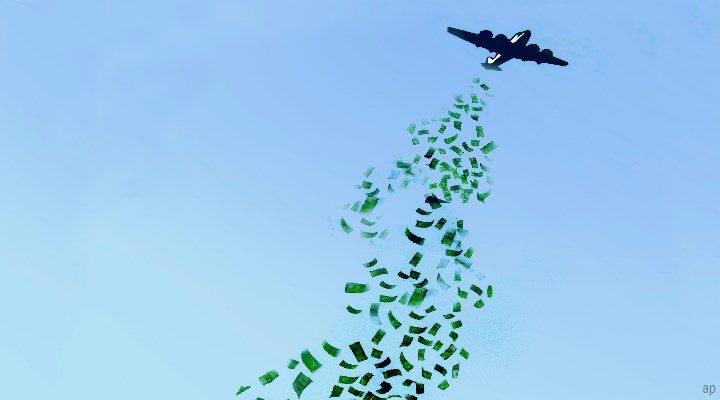Around a third of Morningstar Analyst Rated funds and ETFs are set to see a change to their rating under a revamped ratings system. Research by Morningstar analysts suggests the number of funds across downgraded will outnumber those being upgraded by a two-to-one margin.
Yet while the percentage of active funds rated Gold, Silver or Bronze is set to fall, the proportion of index funds earning an Analyst medal rating is likely to increase. Initial analysis suggests that up to 52% of Bronze Rated funds will see a change to their analyst rating, 30% of Silver Rated funds, and 13% of funds rated Neutral.

This shift would stem at least partly from assigning Analyst Ratings to individual share classes. Until now, we have assigned the same rating to each of a fund’s share classes irrespective of fee differences. Under the new system, we would vary the ratings we assign to share classes by taking these fee differences into account. All things being equal, more-expensive share classes of funds would receive lower ratings than cheaper share classes.
Unlike active funds, index funds would see more upgrades than downgrades under the updated methodology. The main reason for this is that the updated methodology further emphasises low cost, which is a trait the index funds we cover often boast.

Impact of the Changes
Although many fund share classes would retain the same Analyst Rating under the updated methodology, a significant number would see a rating change. Roughly speaking, 40% to 60% of funds rated Gold, Silver, Bronze, and Negative would keep the same rating. By contrast, 80% of share classes rated Neutral would retain that rating.

Most of the ratings changes would involve funds currently rated Bronze (52% of changes), Silver (30%), and Gold (4%).
Almost 90% of share classes experiencing a ratings change would see a one-rung move (30% up, 58% down). The most common moves would be to Neutral from Bronze, to Bronze from Silver, and to Silver from Bronze most commonplace. After the initial impact of the changes, we do not expect the frequency of ratings changes to rise substantially under the new system. This is because ratings would change only when an analyst conducts a formal review, which typically happens on an annual basis.
Differences between share classes
We recently were assigning Analyst Ratings to 1,251 funds with multiple share classes. Under the updated methodology, we expect that 578 of those funds (46%) would receive the same Analyst Rating across the share classes. In these situations, the fee differences between share classes are not so large as to pull costlier share classes into lower rating rungs.
But, 453 funds would receive two different Analyst Ratings across their share classes, and the remaining 220 funds would receive three or more different ratings.
This means it would be more the exception than the rule to see three or more Analyst Ratings across a fund’s various share classes. In roughly 80% of cases, there would be at most two different ratings across a fund’s multiple share classes
 Clean share classes are typically much less expensive. This means the ratings assigned to share classes with management and distribution fees will shift toward Neutral and Negative. Currently, around 65% of such share classes earn Gold, Silver, and Bronze ratings. Under the updated methodology, 36% would receive such ratings.
Clean share classes are typically much less expensive. This means the ratings assigned to share classes with management and distribution fees will shift toward Neutral and Negative. Currently, around 65% of such share classes earn Gold, Silver, and Bronze ratings. Under the updated methodology, 36% would receive such ratings.
Meanwhile, the distribution of ratings assigned to clean share classes would shift slightly towards Silver and Gold ratings from Bronze because the updated methodology places a premium on cost. But the overall proportion of medalists would stay roughly similar. Currently, 71% of these shares receive a Gold, Silver, and Bronze compared with 68% under the updated methodology.
While "Fee Level" rank isn’t a direct factor in the updated methodology, the impact analysis makes it clear that the more expensive a fund, the less often it would receive a Gold, Silver, or Bronze rating. Only around 42% and 20% of share classes with an Above Average or High fee rank, respectively, would receive medalist ratings, compared with about two-thirds today for both.
The new rating methodology
The new fund rating methodology will come into effect on November 1, 2019. It relates to the qualitative analysis carried about by the Morningstar manager research analysts, whereby funds are rated Gold, Silver, Bronze, Neutral or Negative depending on the analysts’ conviction in the fund’s ability to outperform its peers.
One of the most significant changes to the new ratings will be the increased emphasis on fees. Under the revamping methodology, ratings will take into account the difference in fees between the various share classes of one fund. Ratings will be assigned to a particular share class to reflect this, meaning that costly share classes which include advice and sales fees could be downgraded, while cheaper clean share classes may be rated more highly.
While analysts will continue to focus on Morningstar’s five pillars: People, Process, Parent, Performance and Price, the first three pillars will be the focus under the new methodology. These will be judged on a five-point scale from High to Low, rather than the current three-point scale of Positive, Neutral and Negative.





















